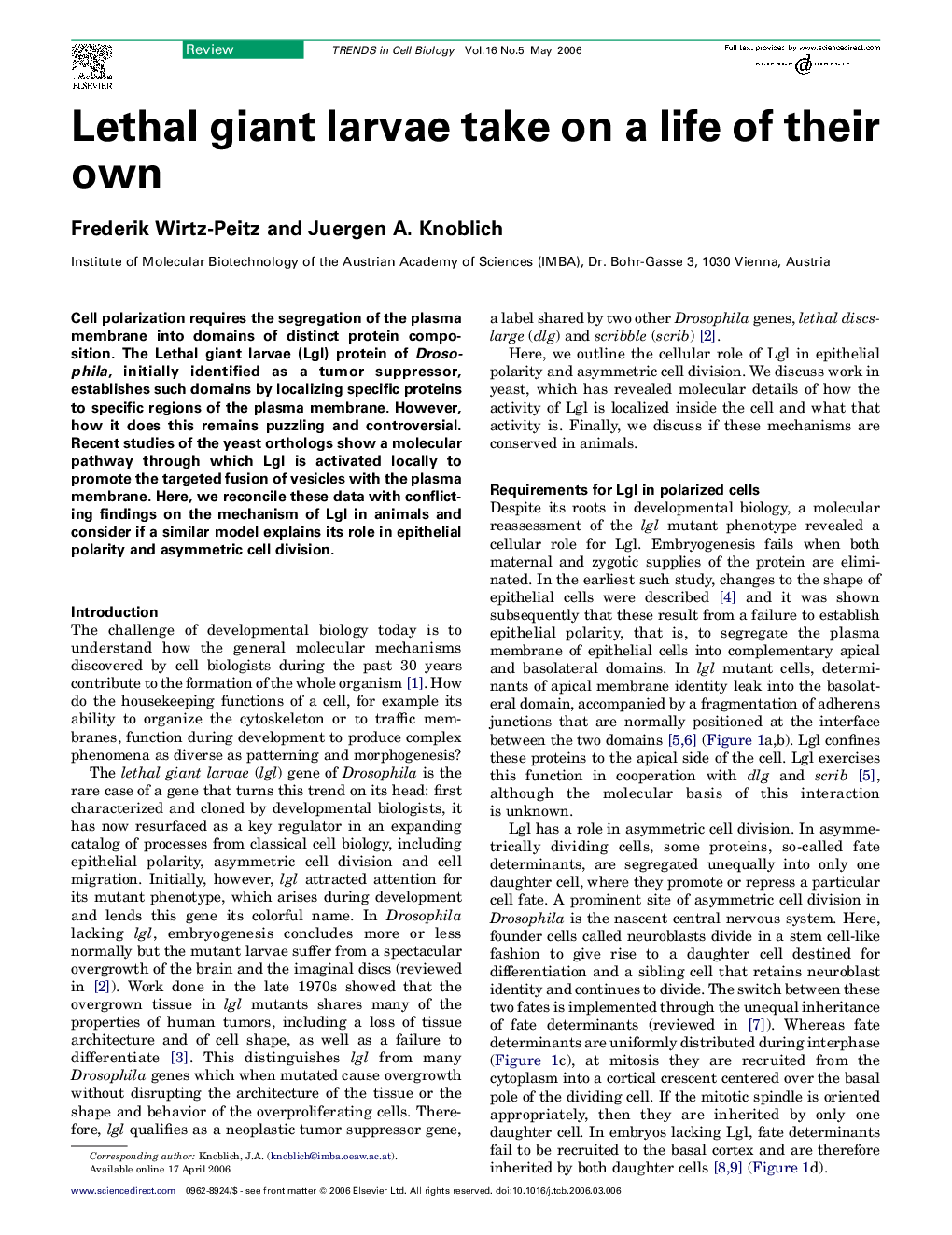| Article ID | Journal | Published Year | Pages | File Type |
|---|---|---|---|---|
| 2205164 | Trends in Cell Biology | 2006 | 8 Pages |
Abstract
Cell polarization requires the segregation of the plasma membrane into domains of distinct protein composition. The Lethal giant larvae (Lgl) protein of Drosophila, initially identified as a tumor suppressor, establishes such domains by localizing specific proteins to specific regions of the plasma membrane. However, how it does this remains puzzling and controversial. Recent studies of the yeast orthologs show a molecular pathway through which Lgl is activated locally to promote the targeted fusion of vesicles with the plasma membrane. Here, we reconcile these data with conflicting findings on the mechanism of Lgl in animals and consider if a similar model explains its role in epithelial polarity and asymmetric cell division.
Related Topics
Life Sciences
Biochemistry, Genetics and Molecular Biology
Cell Biology
Authors
Frederik Wirtz-Peitz, Juergen A. Knoblich,
